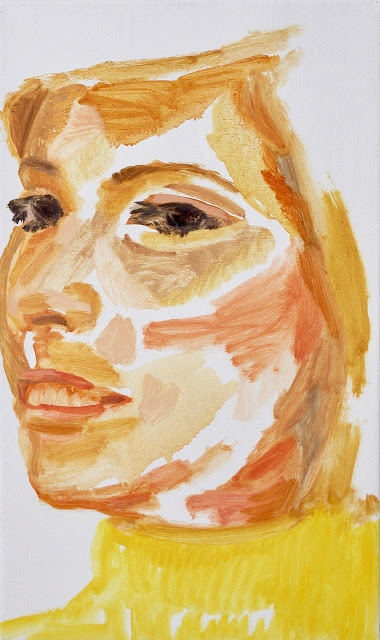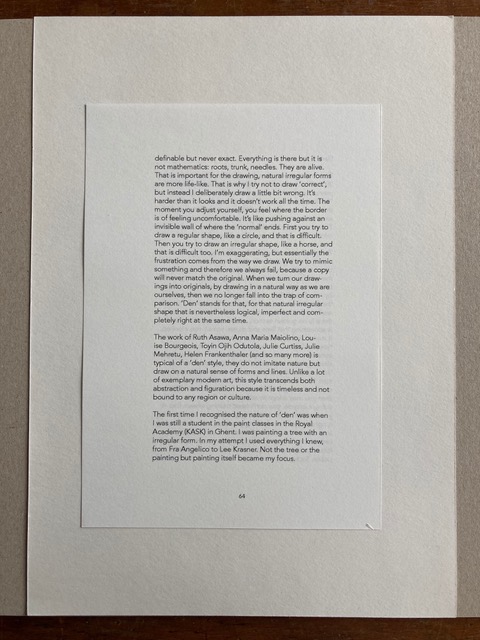Presentation for international women's day 2021
Warp Art Center, Sint Niklaas
(Dutch text below)
Within her representations of women in European art, Eline De Clercq (b. 1979) painted a series of portraits based on Greek Kore sculptures. Their smiles make these free-standing images of young women from the Greek archaic period so lively and engaging. And, they also had colour. In the neoclassical period, colour was classified as secondary to form, which led to a 'decoloured' vision. Today we know better: the marble was polychromed. Colour not only increased the reality effect but offered the Greek artists more symbolic and narrative possibilities and enabled them to characterise.
Through her use of colour, Eline also gives these women character and personality. It fits in with her research in which she questions female representation in art and culture. An important precursor is the fascinating life and artistic attitude of Claude Cahun (1894-1954) and Marcel Moore (1892-1972). This duo (pseudonyms for Lucy Schwob and Suzanne Malherbe) liberated the stereotypical representations of women from the art canon and the social straitjacket. In their art, they show a different perspective: sweet, endearing, empowering, encouraging, surrealistic, elegant, funny, sophisticated, genius, daring, kaleidoscopic and intimate. But under the totalitarian regime of the time, their art was 'entarted', pure degeneracy - if only for their revolutionary daring to address the issue of transgenderism.
Stef Van Bellingen



Binnen haar voorstellingen van vrouwen in de Europese kunst, schilderde Eline De Clercq (1979) vorig jaar een reeks van portretten gebaseerd op Kore-sculpturen. Hun glimlach maakt deze vrijstaande beelden van jonge vrouwen uit de Griekse archaïsche periode zo levendig en aanstekelijk. En, ze hadden ook kleur. In de neoklassieke periode classificeerde men kleur als ondergeschikt aan vorm wat tot een ‘ontkleurde’ visie leidde. Vandaag weten we beter: het marmer was gepolychromeerd. Kleur verhoogde niet alleen het realiteitseffect maar bood de Griekse kunstenaars zowel meer symbolische als narratieve mogelijkheden en stelde hen in staat om te karakteriseren.
Door haar kleurgebruik schenkt Eline deze vrouwen eveneens karakter en persoonlijkheid. Het past bij haar onderzoek waarin ze de vrouwelijke representatie in kunst en cultuur bevraagt. Een belangrijke voorloper is de fascinerende levensloop en artistieke houding van Claude Cahun (1894-1954) en Marcel Moore (1892-1972). Dit duo (pseudoniemen voor Lucy Schwob en Suzanne Malherbe) weekte de stereotype voorstellingen van de vrouw los uit de kunstcanon en het sociale keurslijf. In hun kunst tonen ze dan ook een andere blik: lief, vertederend, versterkend, aanmoedigend, surrealistisch, elegant, grappig, verfijnd, geniaal, gedurfd, caleidoscopisch en intiem. Maar onder het totalitaire regime van toentertijd was hun kunst ‘entarted’, pure ontaarding - al was het maar voor hun revolutionaire lef om het vraagstuk van transgenderisme aan te snijden.
Stef Van Bellingen

























































